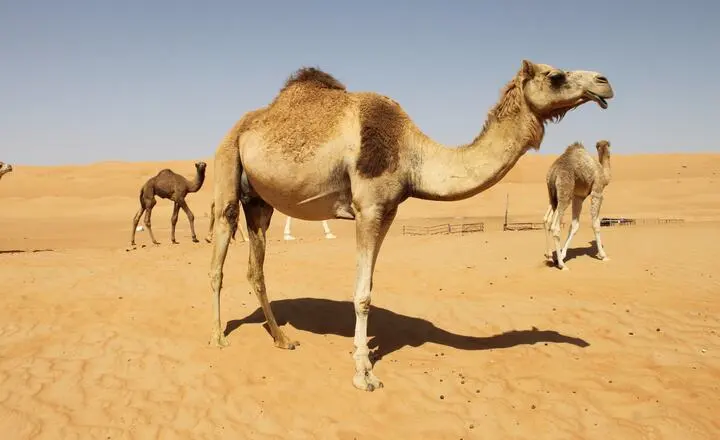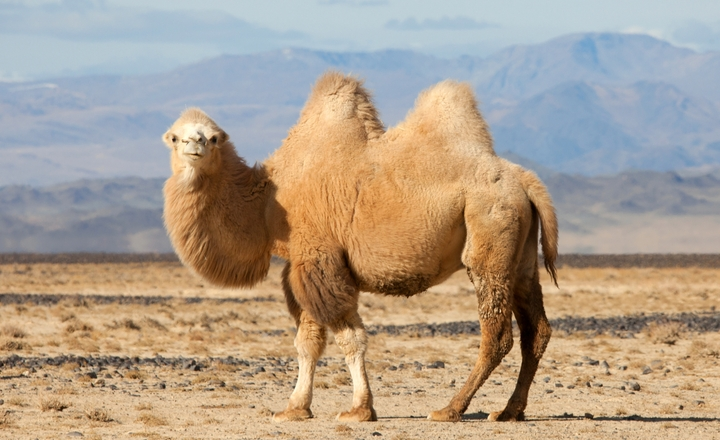In the vast expanse of arid deserts where water is as precious as gold, a seemingly miraculous creature defies all odds the camel. Known as the ships of the desert, these majestic animals possess an extraordinary ability to endure prolonged periods without water.
They navigate through scorching heat and unforgiving terrains with unparalleled resilience. But How Long Can a Camel Go Without Water?
How Long Can a Camel Go Without Water?
Camels are known for their remarkable ability to survive long periods without drinking water. They can go up to seven months without water, thanks to their unique physiology and adaptations for desert life.
Their humps store fat, which can be converted into energy and water when needed. Prolonged periods without water can lead to significant weight loss for camel and even death in extreme cases.
As they go without drinking water, their humps may indeed get smaller or even flatten out. This is a sign that the camel’s fat reserves are being used up as a source of energy and hydration.
When a camel’s hump shrinks too much, it may not have enough reserves left to sustain its vital functions, leading to fatal consequences. Camels living in arid environments must find water sources regularly to replenish their reserves and ensure their survival.
Camel’s Feed Habit Impact the Long Travels
The feeding habits of camels play a crucial role in their ability to endure long travels across arid regions. Camels are known for their unique ability to survive on minimal food and water, making them well-suited for journeys through deserts and other harsh environments.
Their diet primarily consists of rough vegetation such as thorny bushes, dry grasses, and desert plants, which provide the necessary nutrients and energy for sustained travel.
They have evolved specialized digestive systems that allow them to efficiently extract moisture from the food they consume, enabling them to go several days without drinking water. This remarkable adaptation helps them conserve energy and stay hydrated during extended periods of travel.

The distinguishing factor between Dromedary and Bactrian camels lies in the number of humps they possess. Dromedary camels, the more common species, have a single hump, while Bactrian camels have two humps.
These humps serve as energy-storing organs, with each hump capable of storing up to 36 kilograms (80 pounds) of fat. Contrary to popular belief, the humps do not store water but rather function as a reserve for sustenance during times of scarcity.
Camels can survive for extended periods without water due to their unique physiology and ability to efficiently utilize stored fat in their humps.
Despite misconceptions about water storage in their stomachs or humps, it is essential to understand that these structures primarily serve as fuel reserves rather than water reservoirs.
As camels go without food, the hump may deflate as they utilize the stored fat for energy, highlighting the importance of these energy-rich deposits in sustaining them through harsh desert conditions.
Why Do Camels Store Fat in These Humps?
Camels store fat in their humps as a strategic adaptation to survive in their harsh desert environment. The humps serve as a concentrated storage area for excess energy in the form of fat, which can be metabolized when food and water resources are scarce.
By storing fat in their humps rather than distributing it throughout their bodies, camels are able to minimize insulation and regulate body temperature more effectively.
Having fat stored in their humps allows camels to dissipate heat more efficiently during the cooler nighttime temperatures in the desert.
This unique storage mechanism helps camels maintain energy reserves while also managing their body temperature in extreme environmental conditions.
What Happens to a Camel’s Hump, if it Goes Without Food and Water?
When a camel goes without food and water, the fats stored in its hump are utilized for energy. As the fats are metabolized, the hump may shrink or deflate, eventually disappearing if the hunger persists.
Contrary to popular belief, camels do not store water in their humps; instead, their bodies are adapted to efficiently consume and retain water when needed.
They have evolved with specialized body cells that can expand and contract to hold large amounts of water, allowing them to survive in harsh desert environments. This unique adaptation enables camels to go for long periods without water by maximizing their hydration levels.

While a camel’s hump may decrease in size during times of food scarcity, its ability to conserve and utilize resources effectively helps it endure prolonged periods without sustenance.
How Much Water Does a Camel Drink When it Drinks Water?
When a camel drinks water, it can consume 53 gallons (200 liters) of water in just 3 minutes., which is remarkable.
The misconception that camels store water in their humps or stomachs is not accurate. In reality, their water goes into their digestive and circulatory systems for later use.
The unique physiology of camels allows them to efficiently retain and utilize the water they consume, enabling them to go for long periods without drinking again.
This adaptation is essential for their survival in arid regions with scarce water sources. So next time you see a camel gulping down large amounts of water, remember that it’s all part of their incredible ability to thrive in challenging environments.
Where Do Camels Store Water?
They have a remarkable ability to survive in harsh desert conditions due to their unique adaptations that help them conserve water. The key factor is the structure of their red blood cells, which are elliptical in shape and more elastic compared to human blood cells.
This allows camels to store water within their blood cells, enabling them to withstand extreme heat and dehydration.
They have developed strategies to protect their brain tissues from overheating during the hottest months of summer.
By cooling these vital parts while allowing the rest of their body to be exposed to direct temperature effects, camels can regulate their internal temperature and prevent excessive water loss.
These combined body structure and behavior adaptations allow camels to survive with minimal water intake, making them well-suited for arid environments like deserts.
Conclusion
Camels are truly remarkable creatures that have evolved to survive in harsh desert environments with limited water sources. Their ability to go without water for extended periods of time is a testament to their remarkable adaptations and resilience.
While camels can survive up to two weeks without water, it is important to remember that providing them with regular access to water is crucial for their health and well-being.
Understanding the camel’s unique physiology and behavior can help us appreciate and respect these incredible animals even more.
FAQs
Do camels sleep?
Yes, camels do sleep, but their sleeping patterns are quite different from humans. Camels take short naps throughout the day and night rather than having one long continuous sleep like humans.
What makes a camel happy?
Camels thrive in dry and arid climates, so it is important for their well-being to ensure they have access to shade, water, and proper shelter.
Is camel intelligent?
Camels are known for their incredible adaptability to harsh desert environments, showcasing a high level of intelligence in their ability to survive and thrive in such conditions.
